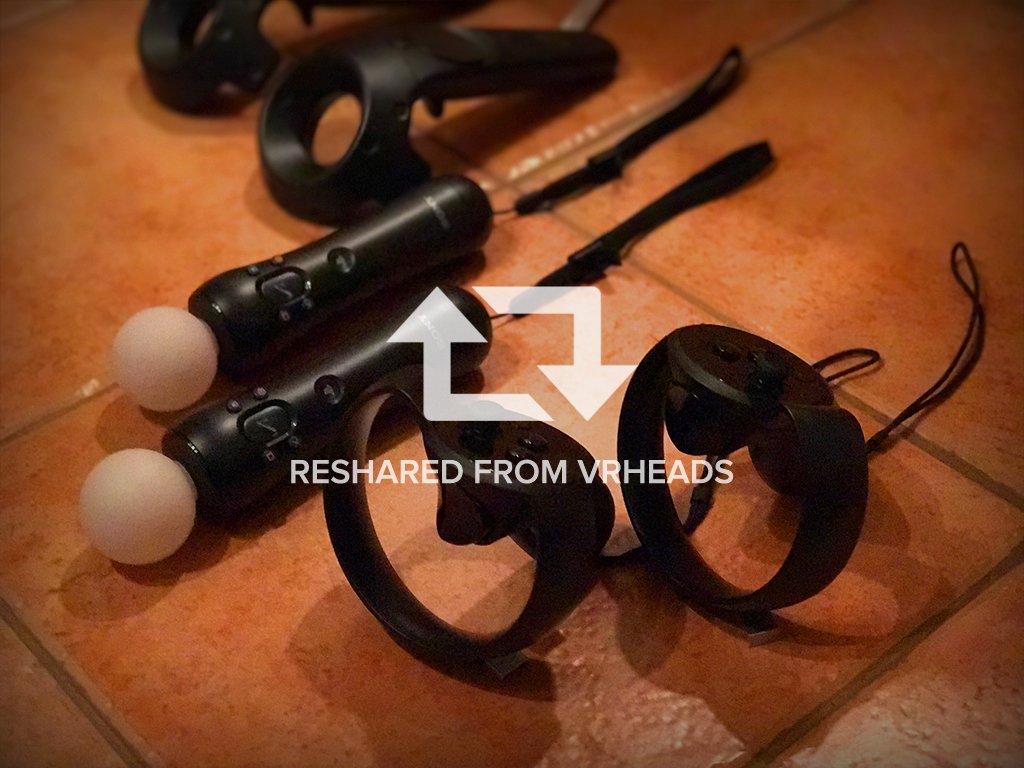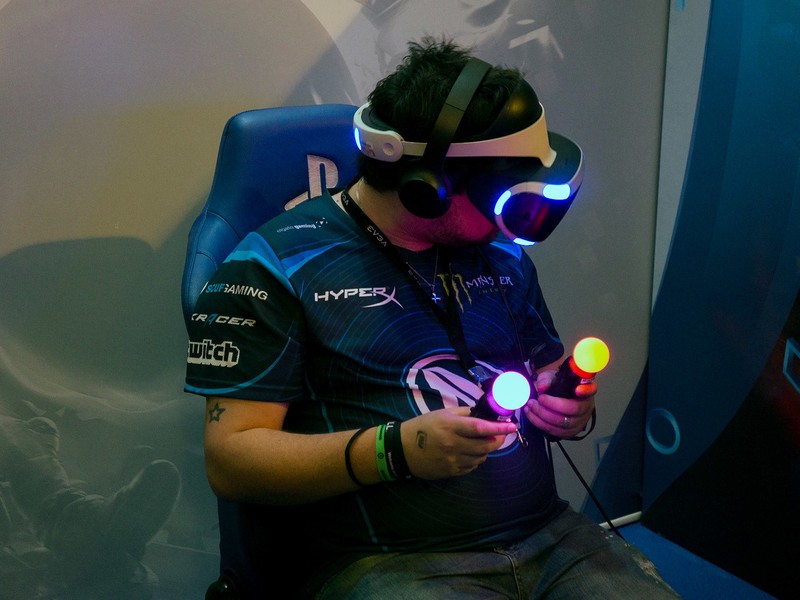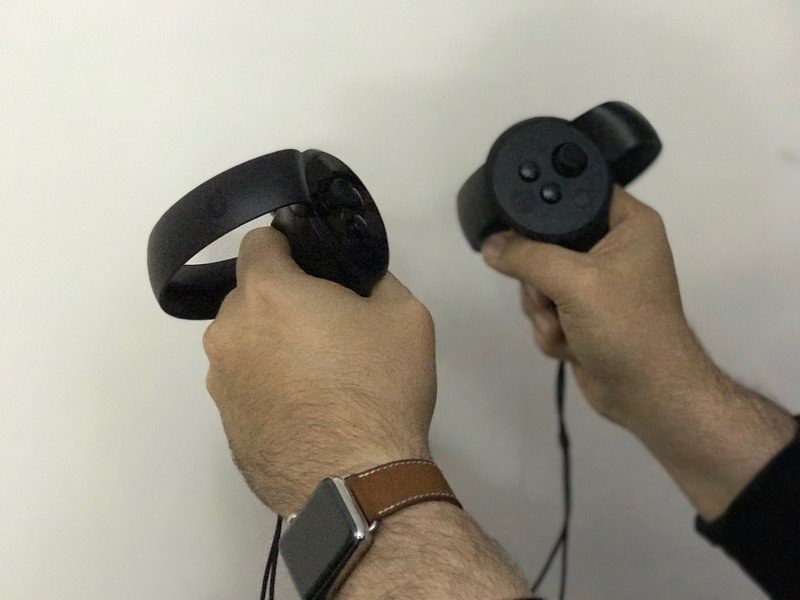The difference between Oculus Touch, HTC Vive, and PlayStation VR controllers

It doesn't matter if you're a PlayStation VR owner, an Oculus Rift Day One backer, or exploring the universe in an HTC Vive, there are now controllers for each that allow you to reach out with your real arms and interact with the virtual world. Where motion controllers used to be seen as unnecessary gimmicks for console gamers, VR has introduced compelling new game mechanics and beautiful new interaction methods with what appear to be fairly simple controllers. For many VR users today, motion controllers aren't an add-on — they're the default — and no app or game is complete without the additional immersion afforded by these accessories.
But are all of these controllers equal? Does it really matter if you're using the aging PlayStation Move controllers instead of the futuristic Oculus Touch? If an app was built with Vive controllers in mind, is the experience identical everywhere? Is there such a thing as a "best" motion controller? Let's take a look!
PlayStation Move

Sony first introduced motion controls to the PlayStation 3 back in 2010 to compete with the explosively popular Nintendo Wii, and nothing has changed about these controllers since that launch. These are simple wands with glowing orbs on one end and a trigger in the middle. Your thumb rests over six buttons, each meant to replicate a button on the PlayStation DualShock controller. There's no joystick or D-Pad, so the controllers are only used for navigating interfaces if the app or game allows you to point with your wand like a mouse cursor.
PlayStation Move requires you be in front of a camera, specifically the PlayStation Camera, in order to have the controllers "seen" in the game you are playing. This means you cannot turn completely away from the camera, or the game loses sight of the controllers and you're unable to interact with the virtual environment. This camera arrangement also only works well in low light, as the camera relies on seeing the light at the end of the wand to determine your position.
These controllers are surprisingly accurate considering it is based on six-year-old technology, but of the three controller systems, PlayStation Move is the least accurate and the most likely to require troubleshooting in order to get back into gameplay when your hands go missing.
Vive Controller

HTC's motion controllers are the only VR controllers that are included in every box. You can't buy a Vive without the Vive controllers because the entire platform is designed around reaching out with your hands and interacting with the world. That means the cost of the Vive package is a little more than the standalone kits for the competition, but it also means every single app and game for Vive is built to make the most out of that experience.
Be an expert in 5 minutes
Get the latest news from Android Central, your trusted companion in the world of Android
These are the largest of the three motion controllers, due in no small part to the sensor ring at the top of the controller. Like the Vive headset, this ring is covered in sensors that pick up light being broadcasted by the Vive Lighthouses. This system ensures a high level of accuracy as long as you are within the Chaperone boundaries. Under this ring, on the shaft of the controller, you'll find a large touchpad for your thumb, a trigger on the bottom, and special grip buttons you activate by squeezing the controller.
Vive controllers feel a little clumsy at first, but the ability to look down in VR and see the thing your arms are interacting with is incredible. Some apps make your controllers a little smaller than reality or makes your hands invisible while you pick something up, and that can occasionally lead to smacking yourself in the head with the controller or smacking the controllers together. The durable design makes damage less of a concern, which allows users to quickly go back to having fun in VR.
Oculus Touch

These are the only motion controllers that weren't available with their associated VR headset at launch, and currently, add $100 to the cost of your Oculus Rift. If you want a full room-scale Oculus Rift setup, you'll need to spend another $60 for a third Constellation sensor. The delay in release for Oculus Touch also means an overwhelming number of apps and games for Rift are built with only the Xbox One controller in mind. This is expected to change over time, which Oculus helped by ensuring there were more than 50 Touch-ready games available when the controllers shipped.
Oculus Touch controllers are by far the most elegant looking and feature-complete of the VR controllers out there today. The whole controller fits in your hand and wraps around your knuckles, giving you access to a pair of joysticks, four triggers, and several buttons on the top of each controller. The first trigger and joystick on each controller can detect when your digits are touching, creating what's called "hand presence" in several apps. This means you can effectively point and stick your thumb up in the real world and your virtual avatar will do the same. If nothing else, it's great for taunting other players in online games.
There's a lot to like about Oculus Touch controllers and the apps that support them. It takes a little extra work to fully enjoy these controllers, though, especially if you need to extend the length of your Oculus cables to appreciate the ability to move around in your playspace without pulling on your PC. Once you figure it out, the whole setup is entirely worth it.
Windows Mixed Reality controllers

Windows Mixed Reality is an upcoming addition to Windows 10, which encompasses the virtual reality and augmented reality offerings from Microsoft. The recently revealed Windows Mixed Reality controllers are a part of this effort, to provide hand motion tracking for headsets on the platform. Although they're not set to release until later this year, we already have an idea of their offerings.
Like the headset itself, Windows Mixed Reality controllers don't rely on mounted sensors. While most consumer headsets on the market utilize external cameras and sensors, Windows Mixed Reality headsets handle all tracking internally. Although the controllers don't use the inside-out tracking of the headset, an integrated sensor array on the headset tracks controller positioning.
However, by relying on front-facing headset sensors, the field of view these controllers operate within could be a cause for concern. Microsoft is yet to provide hands-on demonstrations with the controllers and with this approach to tracking, there could be limitations on their accuracy and movement.
In terms of design, these controllers borrow elements from both the HTC Vive wands and the Oculus Touch controllers. While they'll be held by a single grip like with the HTC Vive wands, you'll be getting a compact form factor like Oculus Touch. From the images we've seen so far, it also looks likely that these controllers sport a combination of a joystick and touchpad.
Your favorite?
Which VR controllers have you tried out? Which do you prefer? Let us know in the comments section!
Updated May 2017: Added Microsoft's upcoming Windows Mixed Reality controllers, which release later this fall.
Essa Kidwell is an expert in all things VR and mobile devices who can always be found with an Oculus Go, a Pixel 2, and an iPhone 7+. They've been taking things apart just to put them back together for quite some time. If you've got a troubleshooting issue with any of your tech, they're the one you want to go to! Find them on Twitter @OriginalSluggo or Instagram @CosmeticChronus.

